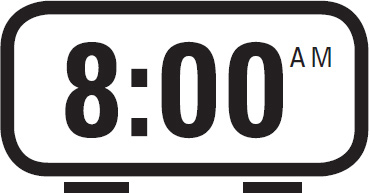

Do you wake up with Sudoku over your morning coffee? Do you do the USA Today or New York Times crossword on the train? Congratulations! You’ve probably gotten very good at Sudoku or the crossword! Now, if your daily life depends on being able to put numbers or letters into grids, you are tons better off for all this practice. Otherwise, not so much. Your practice with these puzzles might boost your confidence in your brain skills, and like a sugar pill, any placebo that you believe works is very likely to work. But other than the placebo effect, your puzzling prowess remains little more than a parlor trick.
The reason is something called transfer—do the brain skills needed to complete a puzzle transfer to the skills of your life? And how far does the brain training of a puzzle transfer? Unfortunately, your brain is pretty darn bad at transferring the lessons from any skill you practice into any other skill, no matter how closely related. For example, do you remember the video game Tetris? It’s that game where blocks fall from the sky and you have to stack them so that they fit together in complete rows. Believe it or not, Tetris has been studied pretty extensively as a test of visual-spatial skills, specifically (as you might imagine) as a test of figure rotation, or your mind’s ability to imagine what something will look like turned on its side or flipped on its head.
Let’s take a quick look inside the brain training of Tetris. What we see is pretty representative of any type of puzzle. First, there’s the hopeful angle: many studies show changes in the brain after Tetris training, most notably decreased activation in frontal and parietal areas of the brain that are associated with mental rotation tasks. In other words, after playing Tetris, you get more efficient at rotating these shapes in your mind, and it takes less brainpower to imagine what they look like when they’re spun. That’s so cool! All it takes is twelve hours of Tetris training to see real, physical changes in the brain.
And this Tetris training makes subjects better at parallel parking, packing luggage into an airplane’s overhead bins, figuring out how frozen food fits in the freezer, and organizing Tupperware containers of holiday decorations in the garage. Actually, it doesn’t. Not at all. Tetris training is so specific to Tetris that it doesn’t even make you better at rotating shapes that aren’t seen in the game. And when people trained in Tetris rotate these shapes in their minds, they spin them clockwise, just like in the game.
The moral of the story is that Tetris makes you better at Tetris. And Sudoku makes you better at Sudoku. Even the crossword puzzle makes you better at the crossword (though in the case of the crossword, there’s some evidence that it makes you better at the process of recall, so chalk this one up in the maybe column). The lesson is that any puzzle you do makes you better only at that puzzle.
Alas! Is there no hope for biggering your brain this morning over your morning cup of joe? Can you not puzzle your way to happier, more numerous neurons? Actually, you can, and the trick is both simple and intuitive: while practicing a puzzle makes you better only at the puzzle, learning how to do a new kind of puzzle challenges your brain to constantly make sense of new information—and if there’s anything you should take away from this book, it’s that constantly doing new things is good for your brain. Once you understand how to do Sudoku, it’s time to leave Sudoku behind. Once you understand Tetris, it’s time to move on. It’s the process of figuring out how to do a new thing and not the rote practice of things you already understand that will make your brain more facile with the kinds of things that really matter to your life.
This Morning: A Puzzling Puzzle
This morning, over your cup of coffee or during the morning train commute, search out a kind of puzzle you’ve never tried before. Maybe try to finally understand what is going on with the north-south-east-and-west bridge puzzle in the morning paper. Or search online for “bridge puzzle” to find a neat new kind of puzzle, popular in Japan, that you might not have seen before. Then give it an hour or a day or a week—long enough that you understand the instructions and feel comfortable with some of the nuances. At that point, you’ve harvested the puzzle’s brain-training ability and it’s time to move on to another type!